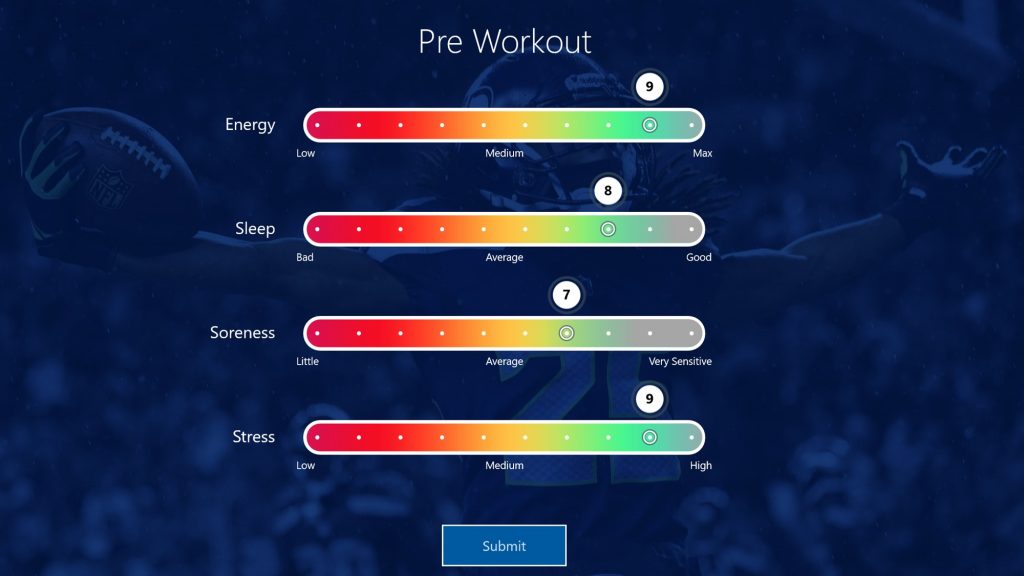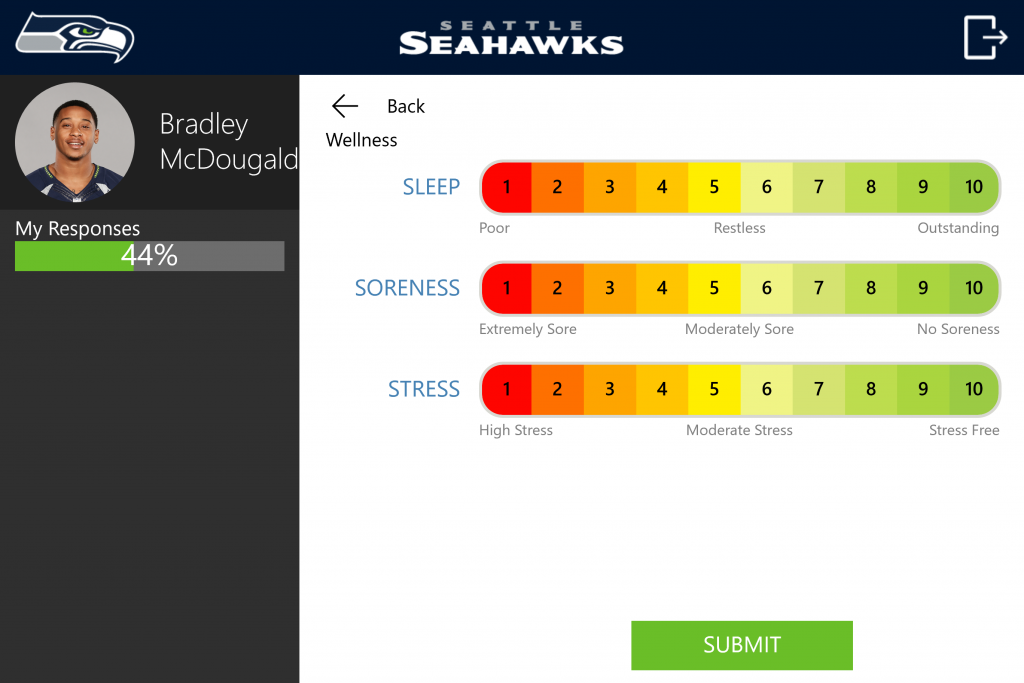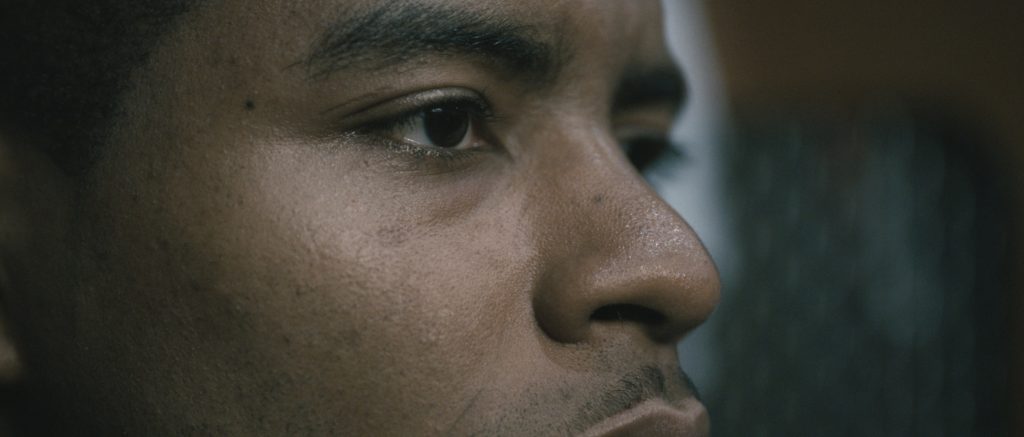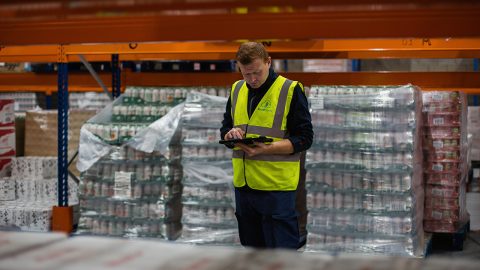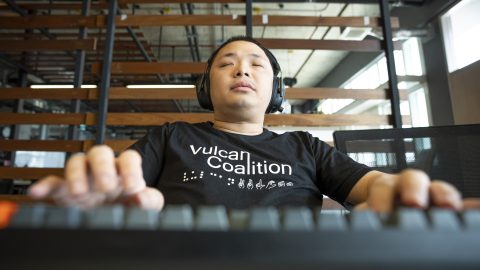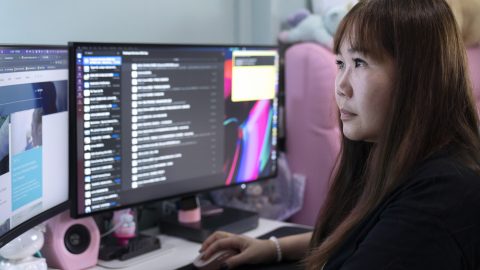The Seattle Seahawks use data and sports science to help players work as hard at recovery as they do on the field
DeShawn Shead lives for the moments he can cause a fumble, take the ball away from a quarterback or make an interception.
“It’s one of the reasons I play the game,” says the 28-old Seattle Seahawks cornerback. “I love to see my hard work pay off.”
He hasn’t been able to do any of that for a year due to a torn ACL and meniscus injury suffered during Seattle’s 36-20 divisional round playoff loss to the Atlanta Falcons in January, but he’s just about ready to head back onto the field. In fact, he’s returned to practice. Technology and science – sports science – are helping him get there.
Under Coach Pete Carroll, each day of the week has a different theme for the Seahawks: Tell the Truth Monday, Competition Wednesday, No Turnover Thursday and No Repeat Friday.
They review film, give it their all during practices, focus on taking away and protecting the ball, and execute plays so perfectly that they only need to do it once.
And it’s all tied together by a mantra that resonates throughout the organization: “Do it better than it’s ever been done before.”
For the Seahawks’ applied sports scientist Dean Riddle, this means being able to apply data and cutting-edge methodology to help athletes achieve their best potential.
“We believe we’re doing really important work for our players, providing them with critical information that is timely so that they have the best possible chance to shine,” he says. “Using technology to help players maximize their health and preparedness enables them to go out and achieve their full potential on the field.”
It’s a long way from the basic SQL databases and floppy disks he was using 20 years ago, when the New Zealander helped monitor training for professional rugby, cricket and soccer teams in the U.K. But those grassroots hacks recorded valuable information and led to productive outcomes. They helped him evolve into a modern data scientist.
Flash forward a few decades, and Riddle is working with Microsoft’s Sports Performance Platform, a data-driven predictive analytics platform that harnesses the power of Microsoft’s cloud with state of the art machine-learning technologies, artificial intelligence capabilities and data visualization.
“Having that creative space and relaxed nature within a high-pressured environment enables forward thinking,” Riddle says. “It’s that mindset of continuously searching for ways to unearth the things that we need to know more deeply so we can help athletes be as good as they can possibly be on game day, and in the weeks leading up to that point. We’re allowed to innovate, free-think and look at best practices from other sporting events and then creatively come up with the best way to apply it to football.”
He and the team’s other sports scientists can tell – by position – what a normal practice load looks like. From there, they can gauge what falls significantly above that, and what falls below. Players who voluntarily participate in the sports science program wear a “GPS” device between their shoulder blades during practices that measures their movements through a gyroscope, magnetometer and tri-axle accelerometer.
“To inform the rehabilitation path, you look for reliable measurables,” Riddle says. “For example, in the current stage of DeShawn’s rehab we’re able to use data to compare following the initial treatment period after the surgery to the stage where he’s running out on the field and trying to do football-specific things. Then, we’re able to monitor him with different technologies so that his trainers can understand, this is what he looks like today as compared to yesterday, know based on the data how’s he’s progressing and when he’s reached the target goal of being fully fit and ready for game day.”
“I believe in creating an environment and opportunities for athletes to achieve their best,” says Sam Ramsden, director of player health and performance for the Seahawks. He established the sports science department six years ago. “Coach Carroll wanted to bring something new and different to the Seahawks, a realm of performance that was untapped in their players. It’s a realm not about x’s, o’s, strategy or meetings, but about what players do to get themselves ready to play. The readiness comes in when players start focusing on the importance of data-driven decision making to maximize performance. How they eat, how they sleep, how they think and even how they move.”
That means meeting them on their level, working with players and coaches to bring insights and information, without overloading them, helping them make more intelligent decisions when it comes to recovery and rehabilitation. But it also helps when they’re healthy, keeping accurate measurements of their best play so they can work from those baselines.
“We internalize Coach Carroll’s commitment to creativity, passion and enthusiasm,” Ramsden says. “And it helps us break down barriers. Anything is possible.”
Players also self-report on how they’re feeling and how much sleep they’re getting through daily questionnaires on Microsoft Surface tablets outside their locker room that use facial recognition to sign them in.
“I can tell you of some cases where we were using the technology to track a particular individual and saw a decline in their explosive moments,” Ramsden says. “We approached that player and asked, ‘What’s going on?’ and they’d tell us, ‘My hamstring is tight.’ So we’d respond, ‘Well, why don’t we tell your coach that your hamstring’s tight. Go to the athletic training room, get some treatment on that and make sure there isn’t an injury there. But let’s back you off. Let’s get some therapy on this, and see if we can’t get you back on track.’ Sure enough, we got that player back on track. And that player went on to do just fine without any issue. So, I think that’s a great example of using information and applying it to our players.”
Recovery is the program’s largest area of growth, says Ramsden. In the past, they’ve been dependent on the “eye test” to see if players are getting back to normal. But now, with data they know when they’re hitting the marks necessary to return to play.
Then they can use that information during rehab so players can recover more quickly.
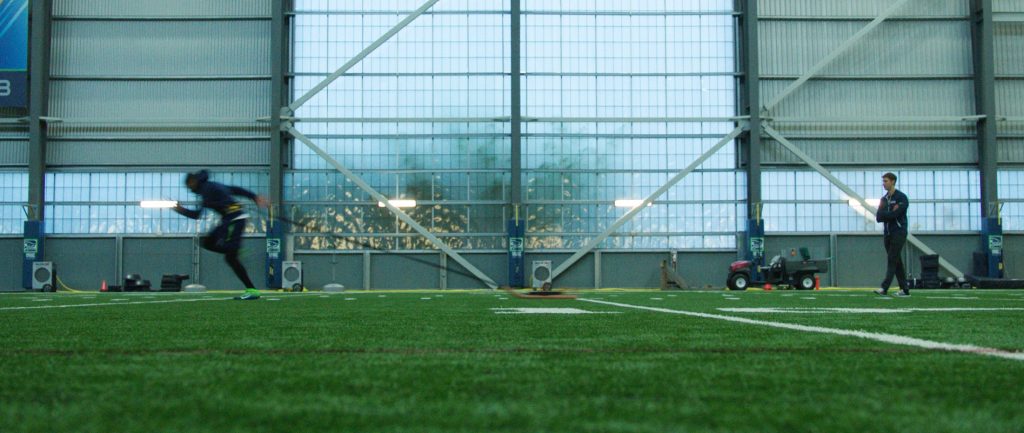
“Now, let’s say across the board, we’re seeing some wellness indicators, body loads and some explosive movements that we haven’t seen. We have some built-in limits that allow us to see whether or not something is green, which is normal. We have a limit, and once you get on top of that or exceed that, you go into the red,” Ramsden explains. “If we’ve got too much red across the board, offense or defense, position-wise, we can then make a recommendation to the coach, say, ‘This would be a good week to back off. You have a lot of players in the red, offensively and defensively.’ Or, ‘Hey, take a look. Your wide receivers are in trouble. How can we help them this week in practice?’ So you can have a very individualized approach, or you can have a very team-wide approach.”
“They want to be informed, to be deeply engaged,” Riddle says. “Understanding the numbers is part of the process. We’re all in this together. That’s the Seahawks way.”
Off the field, they’ve been able to take advantage of other Microsoft technologies for the administration of the organization’s business functions.
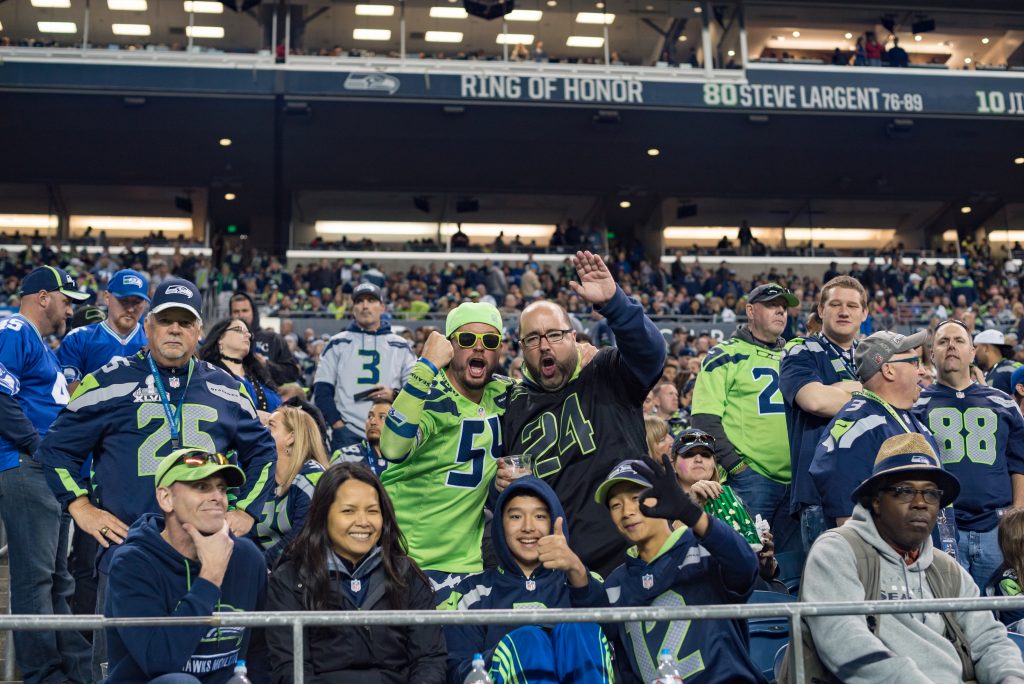
“We used to be very traditional, using technology that was proven. But now, we’re proactive, curious to the use of new technology,” says Chip Suttles, the Seahawks’ vice president of technology. “We can use the cloud to open up solutions.” Using Azure to store data, for instance, has been a big source of savings for the team, and a way to get close to real-time reports with Power BI.
“I think the whole idea of technology and sports is exciting for me because it’s ever-changing,” he says. “No two days are the same and I just really enjoy trying to find solutions that meet the needs of our football operations, our business needs and enhance our fan experience at the stadium.”
Suttles says the Seahawks were the first organization to move their Outlook to Office 365 as a test case for the league. He says that was highly successful, and that they found great benefits in being able to create a mobile environment for their employees.
“New tools like being on the Office 365 platform helped us find solutions in house, versus going to third party providers,” says Suttles. “For example, we just introduced and adopted the new version of SharePoint on Office 365, which has enabled departments like HR to be able to support both our headquarters and our stadium employees off the same platform.”
The Seahawks manage customer relationships and the full lifecycle of sponsorships, suites, ticket and contracts using Microsoft Dynamics 365. With this more efficient approach, the team is heading toward migrating off the use of hardcopy contracts and Excel data sheets to manage these relationships.
The Dynamics 365 applications manage the team’s vast season ticketholder database, helping the team manage over 127 consecutive game sellouts. The system also has helped the Seahawks with fan loyalty, maintaining a current renewal rate of 99 percent – for four years in a row – and managing a season ticket wait list of 12,000.
At the end of the day, Microsoft business applications help provide better experiences for their fan base. The Seahawks game day experience ranked No. 1 in the NFL in 2016. After each NFL game the league surveys thousands of fans to get their input on their game-day experience, including the process of arriving and leaving the stadium, the guest services experience, sense of safety and security, the quality and variety of the food and beverages, and the overall game experience.
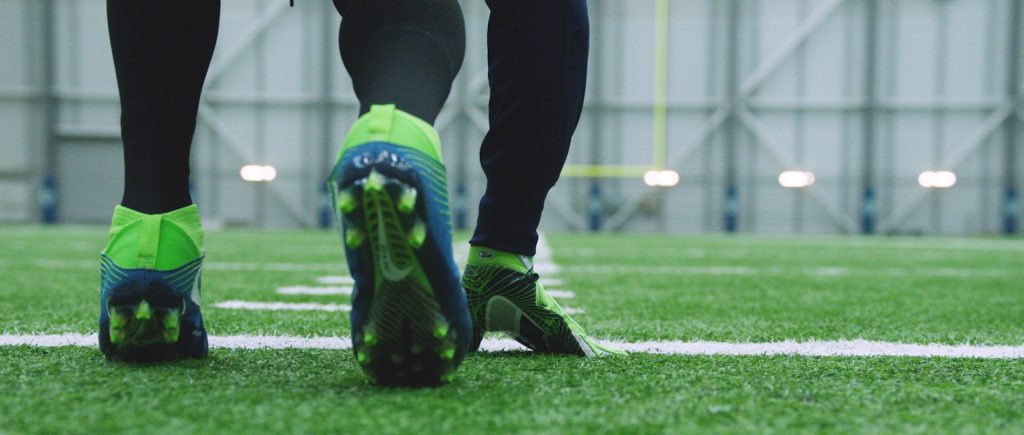
Back on the field, helping players and coaches buy into the sports science system relies on the team’s sports scientists being able to quickly show them data, through Power BI’s visualization options. They can easily compare different days, and show progress or declines in very specific areas.
“The information needs to be digestible to players and coaches, so they can depend on it,” Ramsden says. “We want the player to be able to look at the Power BI visualization and then change it to go, yeah, but what had happened when this happened to me?,” adds Riddle. “You know, we want them to have that experience, and we’re really close to that now, so it’s a pretty exciting time. Our partnership with Microsoft has allowed us to build this really solid foundation so that we can make this leap to a new generation of athletes who are deeply connected to their own performance every single day.”
Another thing that helps the staff wrap their heads around the benefits of the program is its five elements: STEMS, which stands for Sleep and recovery, Thinking, Eating, Moving (movements) and Sensing (vision training). Understanding that every single person on the team doesn’t want to get better at every one of those things, the sports science staff is able to tailor their program to individual players and what they want to get better at doing.
One of the program’s believers is Shead. When the “Most Outstanding Defensive Back” from Portland State University joined the Seahawks in 2012, he fell right into the team mindset.
“This team has a championship mindset. This team treats every single game as a championship game. Every game matters,” he says. “You trust in the preparation, the time we put into studying, working out, what we put into our bodies. The key is to stay consistent. By the time we get to game day, we’ve done so much.”
Even though he hasn’t been on the field with his teammates this season, he’s put the same effort into his recovery as if he’s out there with them.
“Every day, I find the positive,” says Shead, who began playing football in the sixth grade for the Palmdale Tigers with his older brothers, in southern California. “I see my teammates play and practice, and I want to get back out there. I feel like I’m going to come back better.”
Shead is a self-proclaimed “science guy” who loves numbers. He loves being able to track his progress. His “baby steps” have included learning to walk again after surgery, to jogging, then running and now, doing sprints.
“In terms of DeShawn, we’ve been able to use an organizational approach instead of one person’s opinion. We’ve collected data throughout his entire rehab, coming back off of his knee injury. We’re able to take that data and compare it to his position mates,” Ramsden says. “We’re also able to compare it to himself. And I think when you have all that, plus, when you can visually see that maybe there’s some kind of little hitch, you have a reason for it. We’re not guessing anymore. We have the professionals in the building to address the concern that you’re seeing, because there’s data to suggest that he may not be able to power off that leg as well as the other leg, for instance.”
Sports science technology gives Shead the ability to see the difference in power between his right and left legs, and between his muscle and hamstring strength. With this information, his trainers can recommend treatment plans, such as more or less reps in specific areas, which help him recover better.
“Having these technologies and putting it into rehabbing has been great for me, because I have something to gauge and to go off of. I love numbers, so when I can see that one is stronger than the other, that means I gotta do a little bit more reps on the other one,” Shead says. “I think this information is a great tool in rehab that helps guide me to get back on the field.”
When he goes up to the sports science department, he goes through a gauntlet of machines that test his hand/eye coordination (it looks like a video game), as well as how high and fast he can jump on each foot.
“The process is a challenge, and I love challenges,” Shead says.


